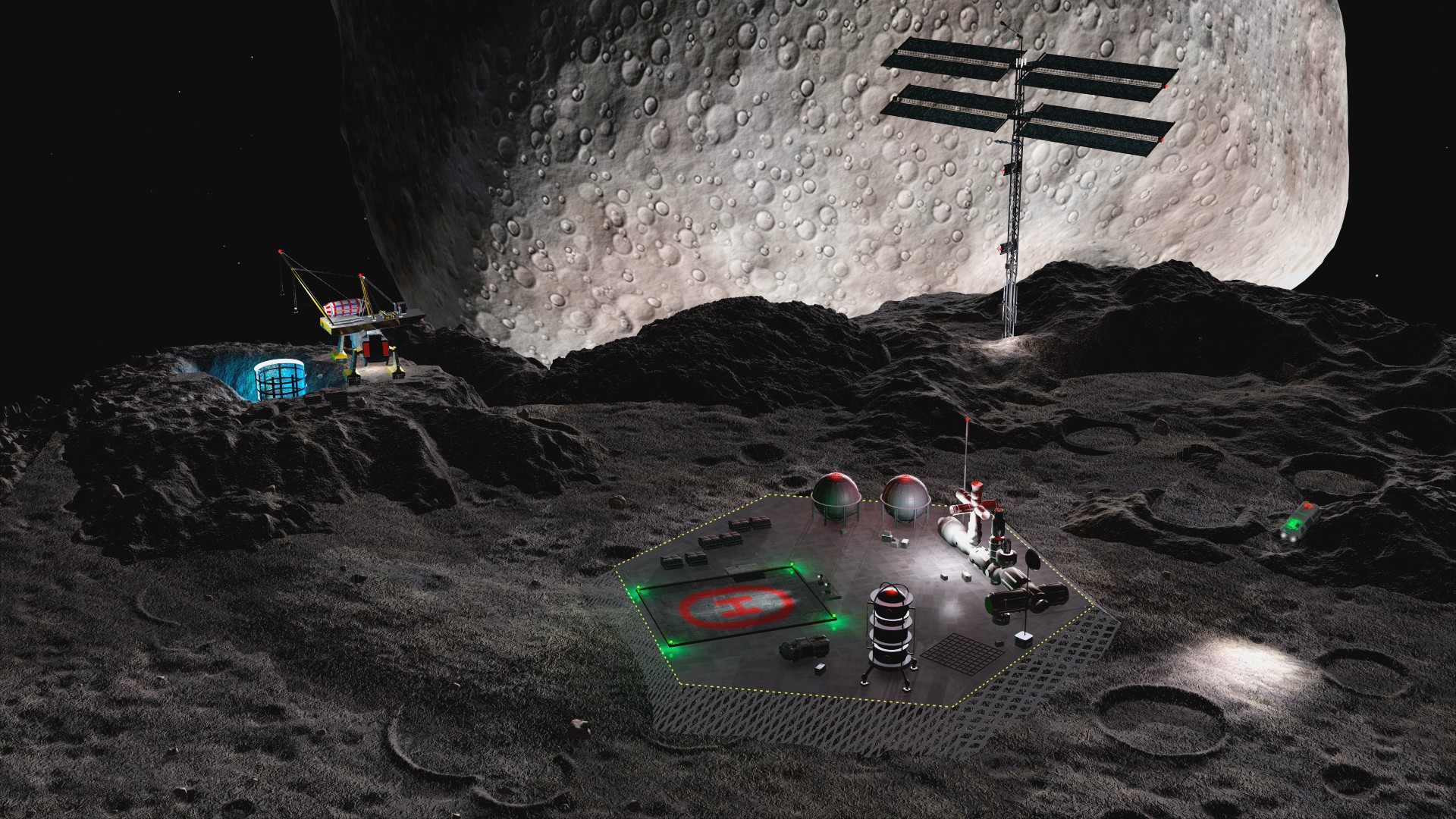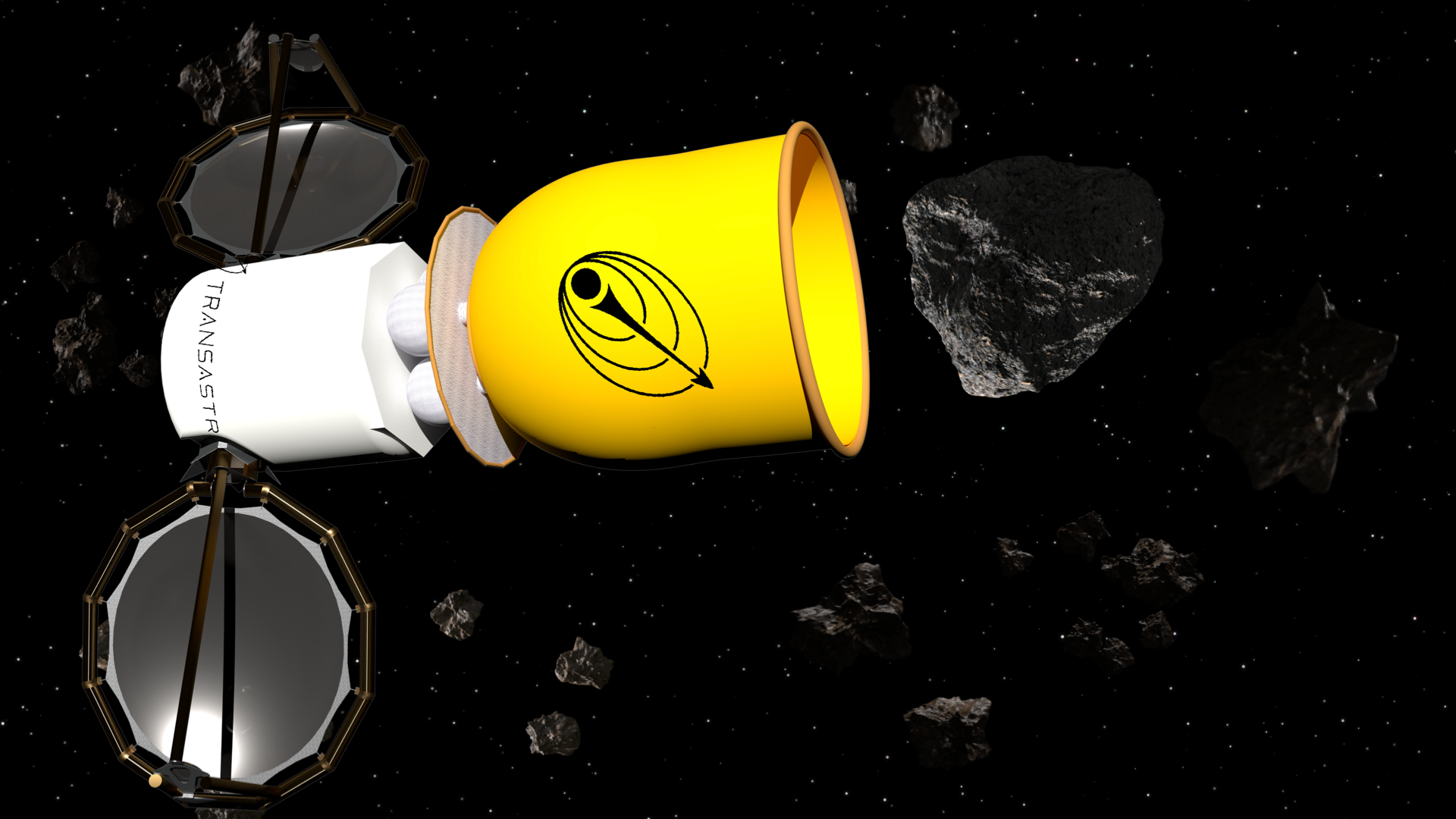Space mining startups see a rich future on asteroids and the moon

"Nobody wants to think about a future in which humans don't thrive. So it's time for us to go into space."

GOLDEN, Colorado — A cash flow cascading from the heavens is a provisionary but promising harvest from asteroid mining. It's already a "claim jumping" enterprise with assertions that billions, trillions, even quadrillions of dollars are looming in deep space, ripe for the picking and up for grabs.
Several space mining groups, eager to dig into extraterrestrial excavation of asteroids, have already come and gone. Left behind are torn, tattered and beleaguered business plans.
The past, however, is prologue. But this time, step-by-step strategies are being fielded. By and large, the prospect of reaping gobs of moolah from off-Earth mining has become a tempered affair.
Related: Asteroid-mining startup AstroForge raises $13 million, books launch for test mission
Resources: enabler of space exploration
"A decade ago, people got excited and there were those declaring that the first trillionaire was going to be made in space in those years," said Angel Abbud-Madrid is the Director of the Center for Space Resources at the Colorado School of Mines in Golden, Colorado.
"They didn't succeed and their plans were very ambitious, too far out, and just didn't happen," Abbud-Madrid told Space.com. Numbers of nations also ballyhooed space mining, but for the good, he said, they all brought attention to a vital fact: Resources are an enabler of space exploration.
In that regard, water has become the main objective of everywhere we want to go, Abbud-Madrid added.
Breaking space news, the latest updates on rocket launches, skywatching events and more!
Space mining has matured to the point where there are dozens of startup companies, even larger firms, addressing aspects of what's called the "space resources value chain," Abbud-Madrid said.
But a "who-ville" of questions are in play: Who is going to obtain the data required to locate valuable resources in space? Who is going to identify the concentrations of material available, drill, excavate, extract and purify it? Who is going to provide the transportation, the power and the communications? Who is not just going to mine, but to use the resources for making structures for space exploration?

Deficit in economic sense
For the time being, there's a deficit in economic sense, said Abbud-Madrid, "and that's why asteroids were abandoned … but they are making a comeback." Even so, one has to be cautious, said Abbud-Madrid, "as some companies are going to fail, some business cases are not going to close, and then it comes down to a more reasonable level. But the interest is there."
Firstly, however, is identifying what resources are available. Then the question becomes who is the customer? "It is a chicken and egg problem. It goes in circles," Abbud-Madrid said.
It is clear that in the near-term the space resources value chain is now linked to the moon. "The whole field is moving and it's all about the moon." Once it is proven to a prospecting paradise, he said, "maybe it will be the asteroids, but that may be a much longer view."
That long view will include a legal-beagle look at extracting asteroid resources, such as ownership and claims issues.
"You see consensus that the UN Outer Space Treaty is not necessarily blocking the extraction of resources. It doesn't allow you to own the planetary body. But in terms of law, how do you do it in an organized, efficient, sustainable and responsible way? It'll take diplomacy," Abbud-Madrid concluded.
Getting to know asteroids
Over the past few years, getting to know asteroids up-close-and-personal has gained momentum.
For instance, there was the trailblazing NASA Near Earth Asteroid Rendezvous effort that touched down on asteroid Eros back in 2001. Japan has scored sample returns of space rock with its Hayabusa missions. NASA's OSIRIS-REx spacecraft is presently en route back to Earth after its touch-and-go collection event at asteroid Bennu. Meanwhile, the space agency's Lucy probe is outward bound to reconnoiter several Trojan asteroids. Yet to be lofted is NASA's Psyche spacecraft to a unique metal asteroid.
Then there's the recent NASA Double Asteroid Redirection Test (DART) — the world's first planetary defense technology demonstration of striking and moving a space rock.
All of these missions definitely help in gathering knowledge about asteroids, Abbud-Madrid said. "Now it's about how do you extract the material? That's going to be the next challenge. Understanding the asteroids is the key thing. We're in that phase of getting to know them."
Read more: NASA's DART asteroid-smashing mission: The ultimate guide
Sky-scanning system
Joel Sercel is founder and CEO of TransAstra, a California-based firm that's aimed at sustainably harvesting resources from the moon and asteroids to change the course of history.
"Several breakthroughs need to take place technically to enable asteroid mining. We feel we've put all those to bed," Sercel told Space.com. TransAstra has blueprinted the transportation and equipment to get the job done, "to actually process the asteroid in a meaningful way," he said.
Part of the plan, Sercel said, is use of Sutter Mill telescopes; it was the Sutter's Mill discovery in 1848 that spurred the California gold rush. "It's a completely new way to think about how to survey for asteroids. We really get the 'cost per discovery' down by factors of many."
Making use of low-cost, commercial telescopes in Arizona and California, TransAstra's sky-scanning system is armed with souped-up software. The system is already busily at work and being fine-tuned, said Sercel. The TransAstra agenda is to peg easily accessible asteroids that are small, say within 15 to 50 feet in size.
"We have a road map of missions that can get us to the point where we are discovering hundreds of times more asteroids a year than current asteroid surveys," Sercel said.
TransAstra's work in this area has been backed by the NASA Innovative Advanced Concepts (NIAC) program, he noted.
Industrial scale
Call it a bee hive of activity.
Under TransAstra's Apis flight system architecture, Sercel and his team are pushing forward on an industrial scale asteroid mining system that features the Omnivore solar thermal rocket, a Mini-Bee demonstration concept and Worker Bee Space Tug. The group has also tested "optical mining," a trademarked technique using concentrated sunlight to excavate and extract propellant from volatile-rich asteroids, moons, and planetary surfaces.
Sercel sees optical mining as making possible TransAstra's vision of reaping thousands of tons of water and other materials for rocket propulsion in space. That wherewithal can greatly decrease deep space human exploration and space industrialization, helping free the Earth's biosphere from the ravages of resource exploitation.
"We go into space to solve the problems here on the Earth," Sercel concluded. "Nobody wants to think about a future in which humans don't thrive. So it's time for us to go into space."
Follow us on Twitter @Spacedotcom or on Facebook.

Leonard David is an award-winning space journalist who has been reporting on space activities for more than 50 years. Currently writing as Space.com's Space Insider Columnist among his other projects, Leonard has authored numerous books on space exploration, Mars missions and more, with his latest being "Moon Rush: The New Space Race" published in 2019 by National Geographic. He also wrote "Mars: Our Future on the Red Planet" released in 2016 by National Geographic. Leonard has served as a correspondent for SpaceNews, Scientific American and Aerospace America for the AIAA. He has received many awards, including the first Ordway Award for Sustained Excellence in Spaceflight History in 2015 at the AAS Wernher von Braun Memorial Symposium. You can find out Leonard's latest project at his website and on Twitter.



